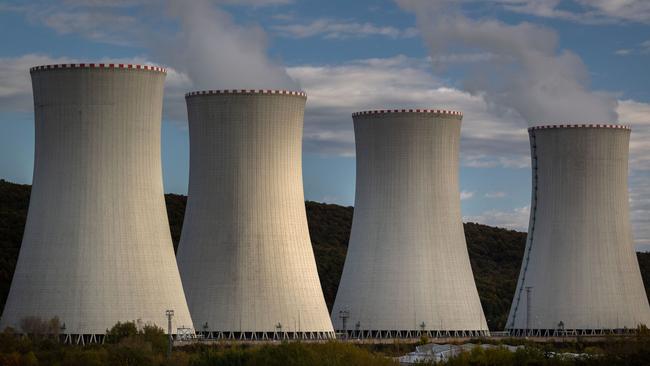Uranium on a roll and this time it looks like it’s for real

Australia is uranium rich and holds one-third of global deposits and, as such, for the local investor they are spoiled for choice in individual uranium stocks on the Australian sharemarket – in addition to having access to several interesting uranium exchange traded fund investments.
After 10 years of the uranium price hovering around $US40 per pound following the “fallout” from the 2011 Fukushima nuclear accident in Japan, the price of uranium started to creep up from 2021.
And when Russia invaded Ukraine in February 2022, the price of uranium took off and is now sitting at $US80 per pound.
Although we have seen a sharp rise in prices, many industry experts believe that there is more price growth to come. Supply has been constrained because many uranium projects have been unviable at $US40 per pound, resulting in low construction activity of new mines in recent years.
But even with uranium prices at $US80 per pound, it will take time for uranium miners to kick start production. It is not a turnkey resource that can be switched on and off as needed.
Aurora Energy Metals managing director Greg Cochran says: “Even if more resources were to come online, there will be at least 10 to 15 years (to allow for permitting) so I feel like the price has a lot of room to move in that time period.”
Uranium sector experts can see the parallels between the current uranium market conditions and the oil crisis of the 1970s.
Brandon Munro, the managing director of ASX-listed uranium development company Bannerman Resources, says: “In those days, it was called the oil crisis; today it’s called the security crisis.
“Both involve wars, both involve a fundamental rethinking about how we do energy. In those days, it was to get away from Middle Eastern oil. Today, it’s to get away from carbon dioxide.
“Inflation adjusted, the sector spent seven to eight years during the ’70s at a price in today’s dollars of over $US200/lb.
“I don’t see any reason why the sector can’t support that today. I’m not saying it’s a forecast, but I’m just saying on fundamentals we should think about that.”
Today there are approximately 60 nuclear reactors under construction around the world, including 25 in China, eight in India and three in South Korea.
With 440 nuclear reactors already operational around the world, the 13.6 per cent increase in new reactors will act as a driver to support ongoing uranium price growth.
Cameron Gleeson, senior investment strategist at ETF provider Betashares, says: “A much heralded new ‘nuclear renaissance’ is building.”
“Governments, from Japan to Europe, are increasingly viewing nuclear energy as a necessary part of the energy mix – both to meet their net-zero emissions goals with reliable base-load power and to provide greater energy security in a time of heightened geopolitical tension.
“Demand for uranium is already outstripping primary supply (ie, supply from mining) due to years of underinvestment, driving uranium prices higher. In the longer term, as more nuclear power comes online there will need to be substantial investment in new uranium mines.”
The first new reactor built in the US for decades, at the Vogtle Plant in Georgia, commenced operations in July this year.
Building nuclear reactors is a very expensive and risky endeavour. However, once they are operational they create long-term demand for uranium.
In terms of how investors can add an exposure to uranium in their portfolios, there are the big ASX-listed players such as Paladin Energy, which has a $3bn market capitalisation, an operational mine in Namibia, and uranium development interests Australia and Canada.
Other major players include Boss Energy, Deep Yellow and Energy Resources of Australia.
Share price movements of uranium companies are not just linked to the price of uranium; there is always operations risk as well.
Boss Energy has had a 73 per cent increase in its share price over the past 12 months, while competitor Energy Resources’ share price has fallen by 37 per cent, having fallen a total of 99 per cent since its 2007 peak.
The alternative to investing directly in uranium stocks is to use a uranium ETF. Although some may prefer the boom-or-bust return matrix offered by individual uranium stocks, for others who would like a more diversified portfolio approach to uranium, an ETF may be the way to go.
Betashares global uranium ETF – which is up 3.5 per cent year to date – focuses on uranium producers and exposure to the uranium price, and has 34 uranium miners and two uranium investment trusts inside the ETF.
Global X ETFs also offer a uranium ETF, up 5 per cent year to date, which holds 46 uranium companies including the world’s largest uranium company Cameco that represents 24 per cent of the portfolio.
It is yet to be seen whether we end up with another uranium boom/bust cycle where prices shoot up and drop almost as fast. Or are we moving into a new era for uranium with sustained price growth underpinned by growing demand?
Either way, despite opposition pressure Australia is not looking to add nuclear power capacity to the mix of domestic electricity generation and it is actually outlawed under two pieces of Commonwealth legislation relating to radiation and environmental protection.
James Gerrard is principal at www.financialadviser.com.au



With the recent surge in the price of uranium, yellowcake investors are hoping for a repeat of the gains made between 2004 to 2007 when prices increased 1300 per cent from $US10 per pound to $US140.